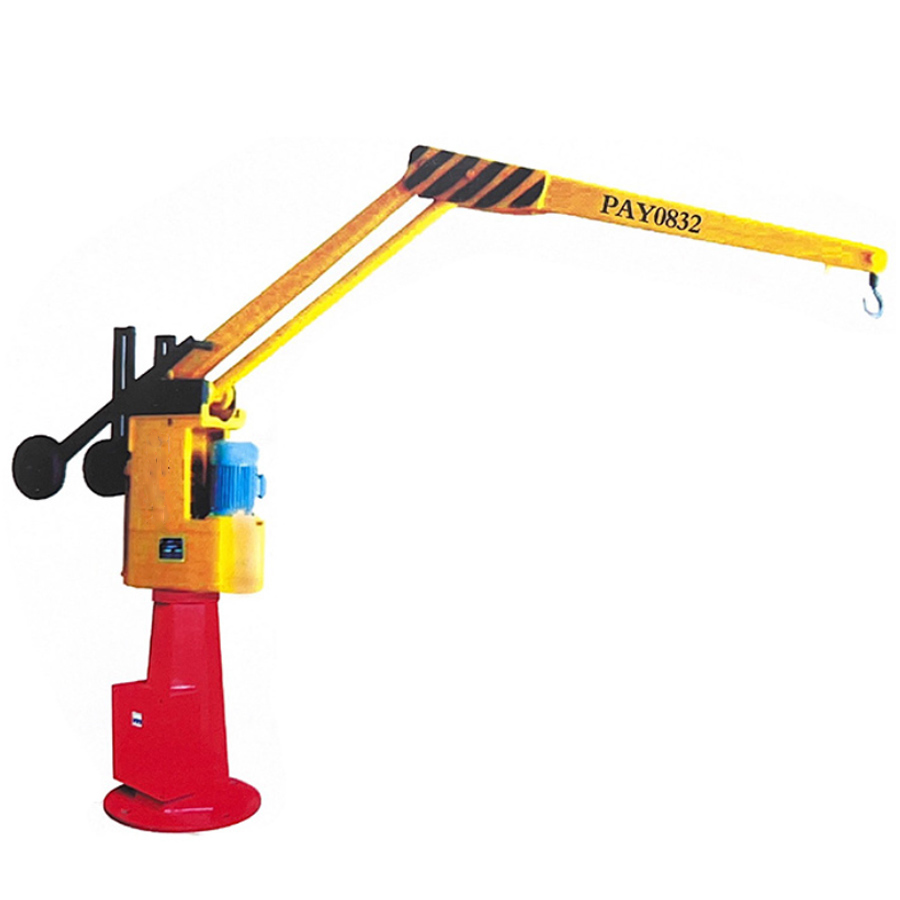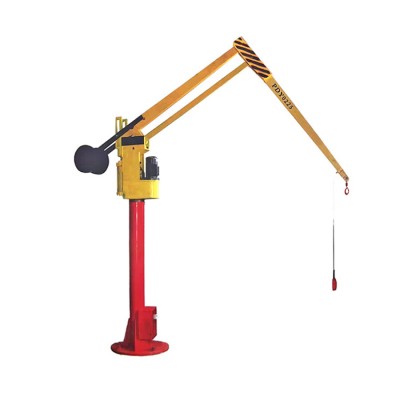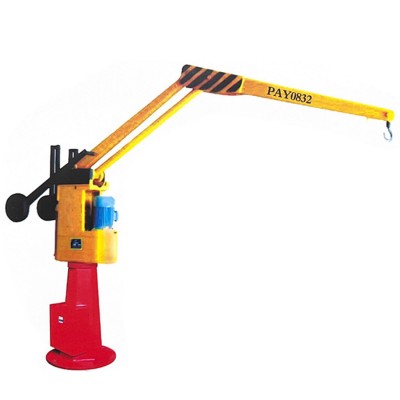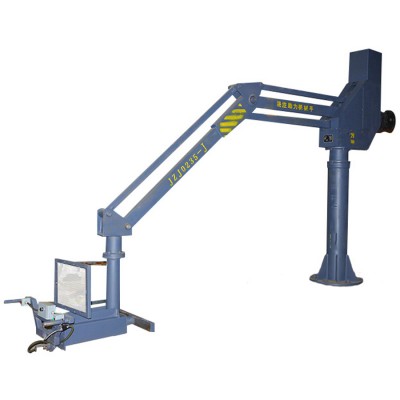5 advantages of Using a Balance Crane for Repetitive Handling
Balance cranes are divided into two types: mechanical and hydraulic. The most commonly used and numerous model in the current market is the PDJ Mechanical balancing crane. It can be customized according to the customer's requirements, ranging from over two meters to up to 3.5 meters, and in some cases, it can even reach up to 4 meters. The balance crane can be equipped with a frequency converter and adjusted to any speed. It is suitable for light and small lifting equipment assembly lines and machining workshops, and is widely used.
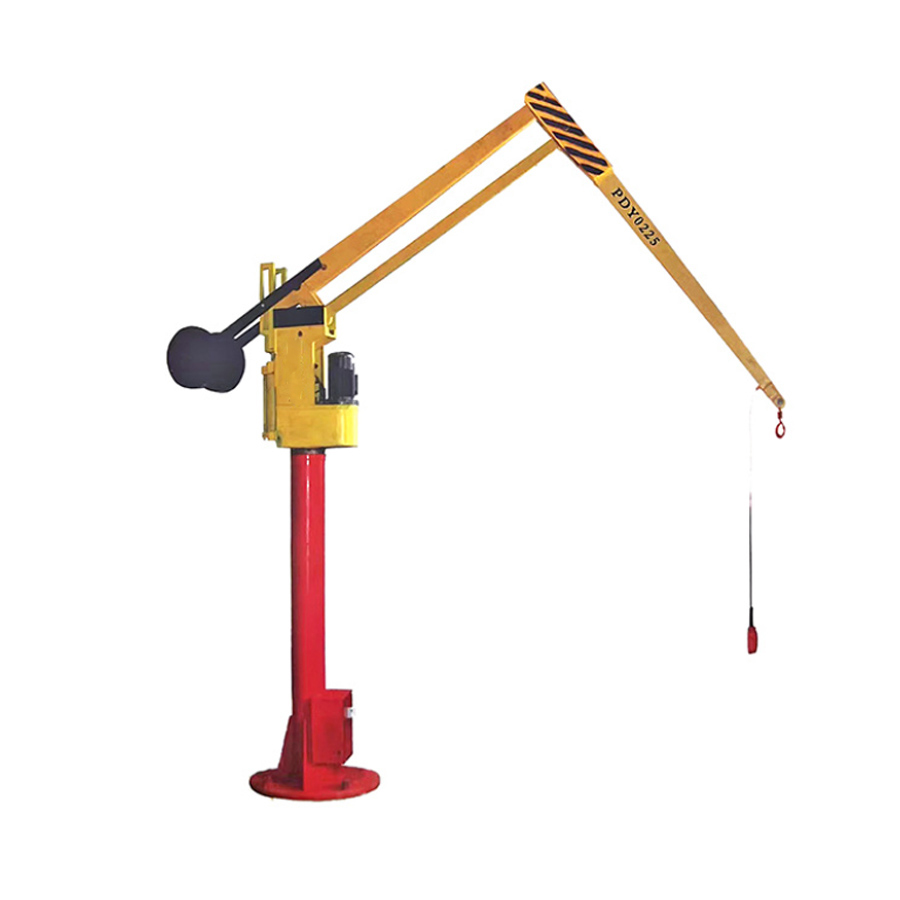
Crane Parts
The balance crane is composed of the machine body, balance arm, transmission box and electrical device, etc.
The machine body is composed of a column, a rotating seat, a column head, an arm seat, horizontal guide rails and stops, vertical guide plates, etc.
The balance boom is composed of a lifting boom, a large bamboo, connecting rods and support rods, which are connected by shaft and bearing hinge points to form a four-bar linkage mechanism.
The lifting movement of this machine is driven by a Y series three-phase AC asynchronous motor.
When consigning, remove the balance arm and counterweight from the machine body and pack them in the packaging box. The entire machine can also be packaged and transported in two parts: the balance arm and the body.
When installing, place the horizontal moving shaft of the balance arm on the arm seat, remove the connecting blocks on the vertical guide plates on the left and right sides of the arm seat, connect the head of the lifting lead screw to the lifting ring at the end of the balance rod, and then reinstall the vertical guide plate to keep the vertical moving shaft in the guide groove. The rolling bearings should be lubricated with calcium-based grease and cleaned once every six months.
5 key advantages
Counterbalanced mobile floor cranes and other types of balancing cranes were designed with user-friendliness in mind. By balancing the weight of tools or components, operators only need to guide the load instead of lifting it. It reduces the fatigue of operators, makes repetitive tasks easier to manage, and also has lower physical demands. In addition, some advanced models, such as intelligent balancing cranes, offer both manual and floating modes, further enhancing operational convenience.
Time is money. Balance cranes can save a great deal of time. By simplifying repetitive handling tasks, the movements become faster, smoother and more direct. Mobile balance crane offers outstanding flexibility, seamless movement between workstations while maintaining perfect balance. They reduce the time and effort required to move heavy objects, thus enabling projects to be completed more quickly. Precise control and stability minimize the risk of goods damage and reduce replacement costs.
The design of the arm adheres to the principle of balance to ensure that the weight of the lifted object does not disrupt this balance. This function enables operators to manipulate the load with high precision, allowing for millimeter-level perfect positioning, making it an ideal choice for repetitive tasks that require precise positioning. For instance, in assembly lines or warehouses where items need to be precisely placed, counterbalanced boom cranes can significantly enhance operational efficiency.
The rigid arm structure ensures that the lifted object remains stable during movement, minimizing swing or vibration. This stability is crucial for repetitive processing tasks as it reduces the risk of accidents and damage to goods. Compared with traditional cranes or electric cranes, it can operate more smoothly and improve the overall productivity.
It has strong versatility and can adapt to various environments and tasks. It is widely used for the upper and lower parts of machine tools. Lifting and transportation between assembly and repair processes of medium-sized components; Core setting, box closing and so on in the foundry workshop. It can be equipped with different accessories, such as hooks or specialized lifting tools, to adapt to a wide range of loads. This adaptability makes them applicable to a wide range of industries, from manufacturing and construction to logistics and warehousing. It can also provide greater accessibility in narrow areas through narrow Spaces and narrow corners.
FAQ

01.How does the balancing system work?
02.What training is required for operators?
03.Can the system be adjusted for different load weights?

